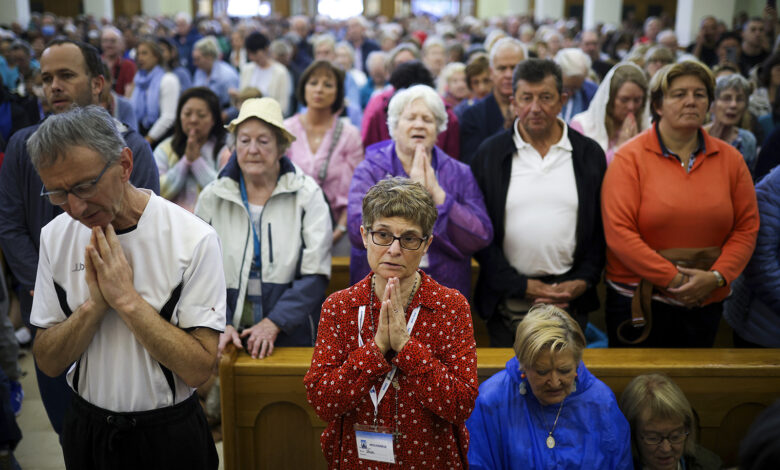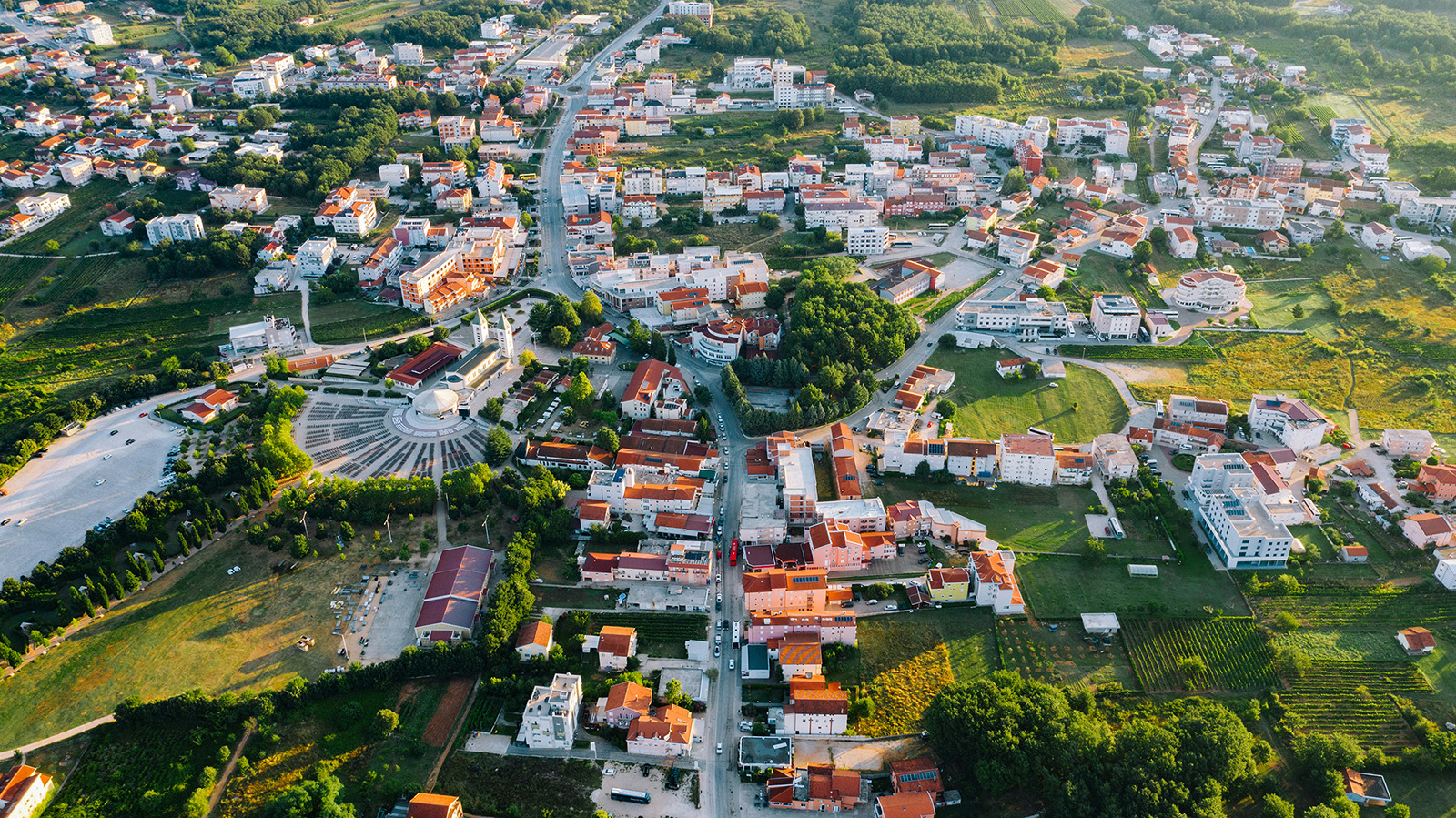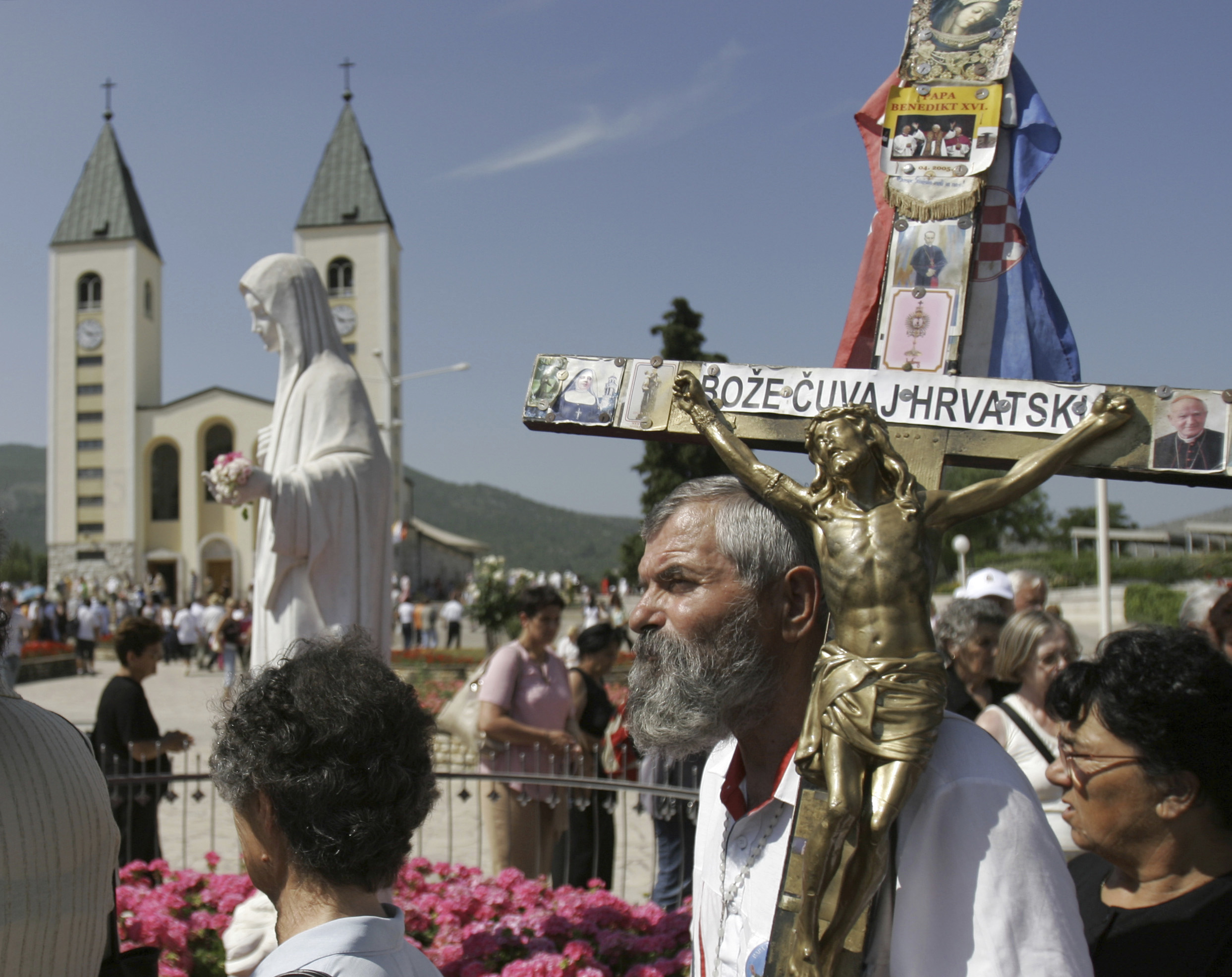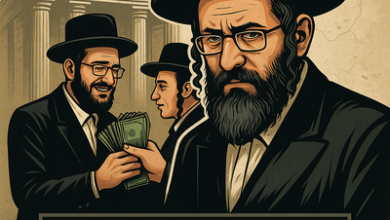
VATICAN CITY (RNS) — After 40 years of studies, commissions and contradictions, the Vatican finally approved the spiritual devotion of the faithful at the Marian site at Medjugorje, in Bosnia-Herzegovina, in a document issued on Thursday (Sept. 19).
“The Dicastery for the Doctrine of the Faith, with the assent of Pope Francis, grants approval for devotion linked to Medjugorje, recognizing the abundant spiritual fruits received at the Sanctuary of the Queen of Peace without making a declaration on the alleged supernatural character of Marian apparitions,” the document read.
On June 24, 1981, a young girl called Ivanka Ivanković claimed to have a vision of the Madonna at the foot of a hill near the parish of St. James in Medjugorje. On that same day, six children reported having seen Mary holding an infant. The visions stirred a deep astonishment among believers from all over the world and began a long series of pronouncements regarding the credibility of the event.
The young people claimed to receive messages from Mary and, in time, the messages became more frequent. Pope Francis warned the faithful not to be fooled by false claims of apparitions and voiced skepticism about “the mailwoman Mary” during a news conference returning from his visit to the Marian Shrine of Fatima in Portugal in 2017.
Despite the pope’s doubt, the devotion to “The Queen of Peace” in Medjugorje is undeniable. Estimates count over 1 million pilgrims a year, and 3 million before the COVID-19 pandemic. A study by the sociologist Luca Presenti from the Catholic University of the Sacred Heart in Milan found that most people who visit the site are inspired by spiritual motives, including spiritual comfort (38%), requesting help for themselves or others (23%) and the need to be connected to the divine (17.7%).
Pilgrims who visited Medjugorje said that their lives were changed by the experience (48.8%), some very much (30.4%) and others radically (14.5%), according to the study, which also found that the site led to an increase in religious practice, receiving the sacraments and prayer.

Aerial view of Medjugorje, Bosnia-Herzegovina, with pilgrimage site St. James Church at center left. (Photo by Jeswin Thomas/Unsplash/Creative Commons)
“There is a spiritual vitality, faith, conversion and positive fruits that lead us to believe that God is doing positive things there,” said Cardinal Victor Fernandez, the Vatican’s doctrine czar, speaking at the news conference Thursday.
The new Vatican document abstains from deciding whether the visions were real. In May of last year, the Vatican’s doctrinal department issued new norms to help discern supernatural phenomena. The major change was that the Vatican or local bishops will only have to issue a “nihil obstat,” which in English translates to “nothing impedes,” and allows faithful to show devotion but doesn’t comment on the miraculous nature of a phenomenon.
The new norms also stated that the Vatican can revoke the “nihil obstat” at any moment.
Previously, bishops would have to make an initial evaluation of the supernatural phenomenon, which sometimes resulted in confusion among believers. After the alleged vision at Medjugorje, Bishop Pavao Žanić of Mostar-Duvno expressed “strong doubts” on the events in a report sent to the Vatican. The Episcopal Conference of Yugoslavia also deemed that the events were not of a supernatural nature in a document known as “The Zara Declaration.”
The number of pilgrims visiting the site grew regardless, and in October 1994 the new ordinary at Medjugorje, Bishop Ratko Perić, asked then-Pope John Paul II to issue a final pronouncement on the site. The Vatican’s doctrine department finally stated that pilgrims were allowed to visit the site, without declaring that the visions were authentic. In 2008, Pope Benedict XVI called for the creation of an international commission of theologians and experts led by Cardinal Camillo Ruini, which found that “the youths, who were mentally sound, were not influenced in any way by anyone” and that “the devotion born in Medjugorje has a supernatural origin, it’s authentic.”

Pilgrims walk around a statue of the Blessed Virgin Mary near the church of St. James in Medjugorje, Bosnia-Herzegovina, on June 25, 2006. (AP Photo/Amel Emric, File)
In 2017, Pope Francis called for further study of the apparitions, and in 2019, he lifted the ban on official pilgrimages to the site, allowing faithful to celebrate a youth festival there.
The new Vatican document takes inspiration from the commission’s findings, and from Benedict’s belief that the supernatural events at Medjugorje and the lively following that resulted should be considered separately. The document cautions not to take the alleged Marian messages individually but to consider them as a whole.
The alleged seers “perceive a message and make an effort to remember it and express it as best they can, and it might happen that they don’t find the most appropriate words to do so,” the document read. The Vatican especially warned not to pay too much attention to the messages from Mary that are too specific regarding “dates, places, practical aspects, and makes ordinary decisions that should be discerned within the community.”
The Vatican also addressed questions regarding the integrity of the alleged seers, who were criticized for not becoming priests or nuns and in one case for smoking cigarettes. “The nihil obstat doesn’t resolve or conclude everything for the future,” the document stated. “It’s a decision that is open to developments in time and space.”
Source link




